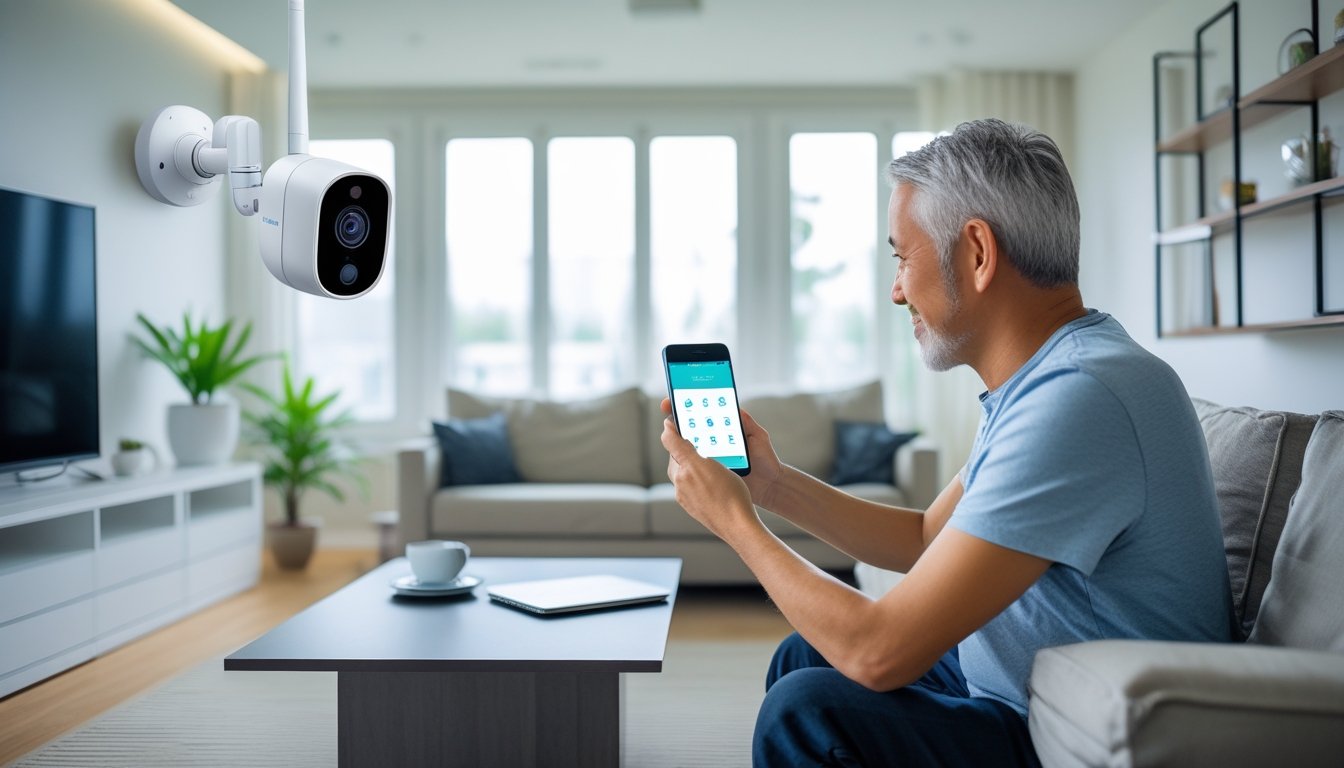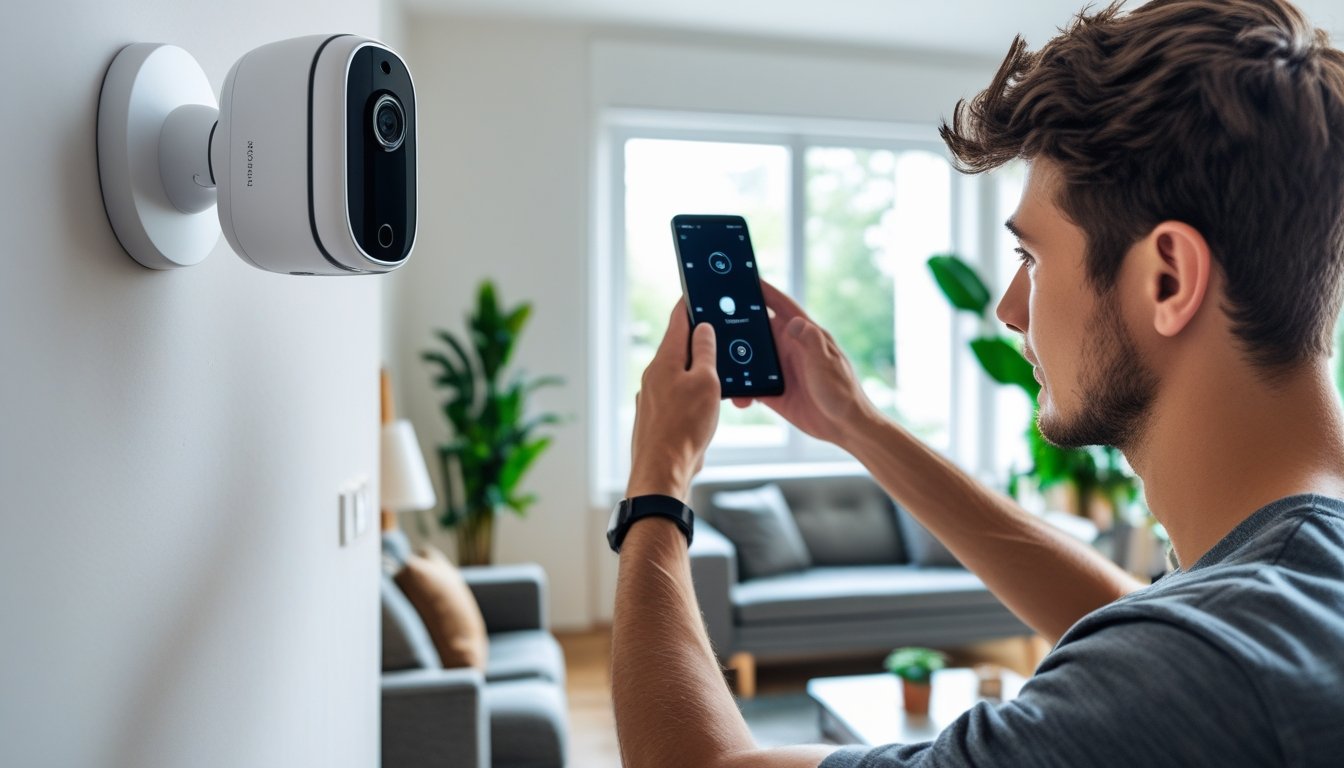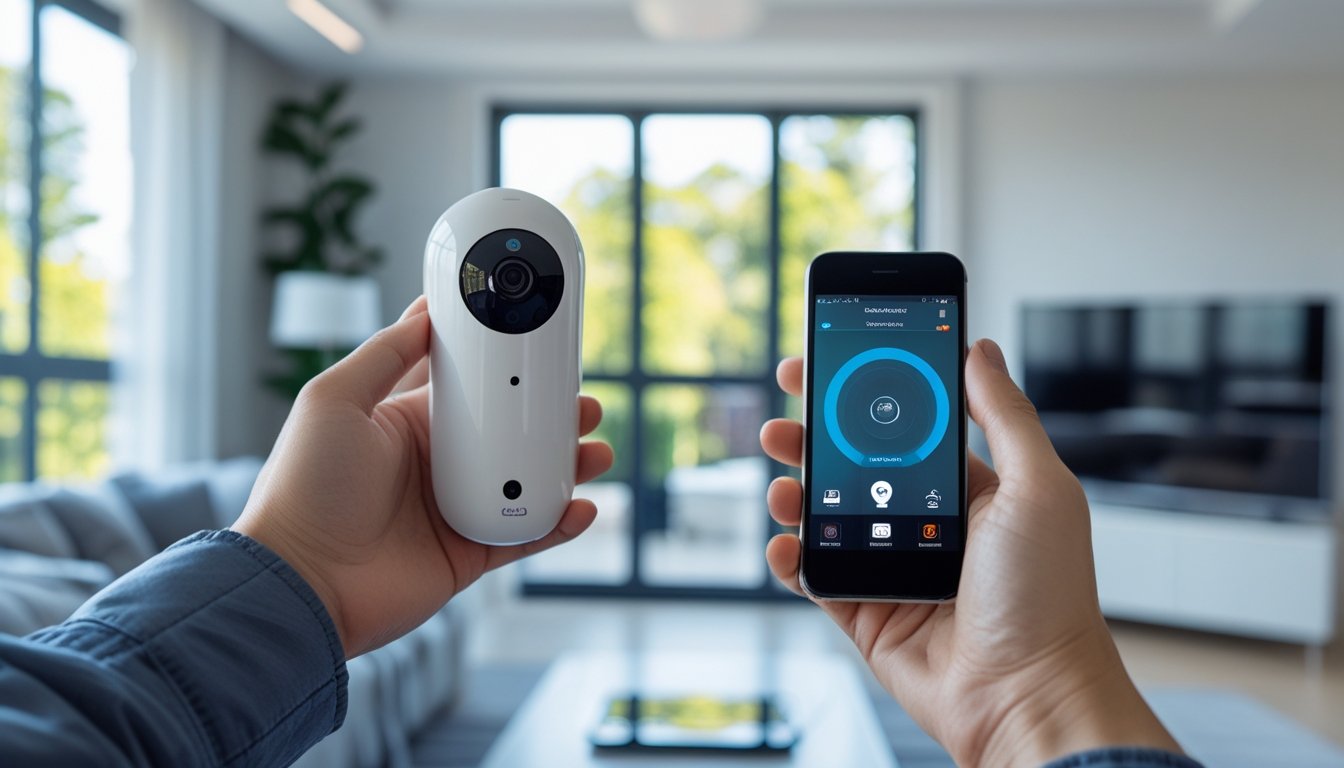Late updated: 11 Oct 2025 12:10
Written by: Elena Prescott
Understanding Home Security Cameras for Beginners: A Comprehensive Guide
Home security cameras have become an integral part of securing our homes and protecting our loved ones. In a world where technology evolves rapidly, it's essential to grasp the basics and nuances of security cameras. By understanding their features and functionalities, we can make informed decisions that best suit our security needs. This guide is designed to simplify the complexities and provide clarity on selecting and using home security cameras effectively.

Security cameras come in a variety of types, from wired to wireless systems, each with its own advantages and limitations. Choosing the right camera involves not only evaluating the features but also considering the layout and environment of your property. Whether it's for keeping an eye on your home while away or safeguarding your business premises, knowing which camera to use and where to install it can make a significant difference in the level of security.
Understanding how to set up and manage these systems can seem daunting at first. Our aim is to demystify the process with straightforward explanations and practical advice. A well-installed and maintained security camera system not only enhances safety but also provides peace of mind. Dive into our comprehensive guide, and discover how simple and accessible home security can be.
Key Takeaways
- Security cameras are key to effective home protection.
- Types and installation impact camera performance.
- Proper setup ensures optimal security coverage.
Essential Concepts of Home Security Cameras
Security cameras play a vital role in safeguarding our homes. Grasping the basics can enhance both their effectiveness and ease of installation. We'll look into different types, highlighting features, and the differences between indoor and outdoor options.
Types of Home Security Cameras
Home security cameras come in various forms, each with its unique benefits. Wired cameras, like CCTV systems, provide reliable connection without latency issues, though installation is more complex. Meanwhile, wireless cameras offer flexibility and simpler setup but rely on a strong Wi-Fi signal.
Popular types include dome cameras, which offer a discreet appearance and wide field of view, and bullet cameras, known for their visibility and deterrent factor.
IP cameras provide higher image quality and access via the internet, while analog cameras are more traditional but often used for specific security setups. Choosing the right type depends on the installation site, coverage needs, and personal preference.
Key Features of Security Cameras
When selecting security cameras, certain features are essential for comprehensive monitoring. Motion detection and night vision are crucial for 24/7 surveillance, allowing cameras to capture movement in the dark. Two-way audio enables communication through the camera, adding an interactive element.
Consider the field of view, which determines how much area a camera covers. Cameras with a wider field can reduce the number of units needed. Durability, especially for outdoor cameras, is paramount. Check for an adequate IP rating to ensure resistance to dust and water.
Some outdoor security cameras offer solar-powered options, providing an eco-friendly choice. Whether the setup uses a network video recorder (NVR) or digital video recorder (DVR), having sufficient storage is essential for maintaining continuous recordings.
Image Quality and Resolution
Image quality is critical for identifying details, such as faces or licence plates. We prefer cameras with at least 1080p resolution. High resolution ensures clearer and more detailed images but may require more storage and higher bandwidth.
IP cameras typically offer superior quality compared to analog cameras. The quality not only affects the clarity but also the usefulness of the footage for security purposes. Understanding the balance between quality, cost, and storage requirements can guide a more informed decision.
Indoor Versus Outdoor Cameras
Indoor and outdoor cameras serve different purposes and face unique challenges. Indoor cameras focus on monitoring vulnerable points inside the home and must blend seamlessly with the decor. They usually don't require high weatherproof ratings.
Outdoor cameras need to withstand the elements, thus requiring a higher IP rating for weatherproofing. Features such as night vision and motion detection are crucial, given their role in monitoring entry points.
Cameras like bullet and dome designs are prevalent outdoors due to their coverage capabilities and durability, while more compact models suit indoor settings where discretion is key. Selecting the right camera depends on the specific security needs of each area.
Setup and Security Considerations for Beginners

When introducing a home security camera system, there are several factors we need to consider to ensure both effectiveness and safety. Essential elements include strategic camera placement, connection methods, and maintaining privacy and security of the system.
Best Practices for Camera Placement
Effectively placing your cameras is crucial for maximising surveillance coverage. We should aim to cover entry points such as front and back doors, ground floor windows, and driveways.
Exceptions: Avoid areas where privacy might be infringed, such as bathrooms.
For outdoor cameras, it's advisable to mount them 8-10 feet high to deter tampering, yet allow for clear, identifiable images. Indoor cameras should focus on main pathways or high-traffic areas. Keep in mind lighting conditions to avoid glare or shadows that could obscure video footage.
Choosing locations with easy access to power sources simplifies installation and reduces the chances of disconnection.
Installation and Connectivity Options
There are several installation options available that cater to different needs and environments. Wireless security cameras offer ease of installation as they eliminate the need for extensive cabling. However, they require a stable Wi-Fi connection for reliable operation. Conversely, Power-over-Ethernet (PoE) cameras provide a more stable connection by transmitting both power and data through a single cable, reducing the need for nearby power sources.
Deciding between professional installation and a DIY approach depends on our comfort level with technical setups. Those opting for self-installation should carefully follow manufacturer guidelines, especially regarding network configurations, to ensure the system's proper functionality.
Recording, Storage, and Remote Access
Recording storage can be managed either locally or via cloud services. Local storage may involve using a Network Video Recorder (NVR) that stores footage on an internal hard drive. This offers control over data but can risk data loss if the recorder is damaged. On the other hand, cloud storage provides secure backup options via cloud recording, albeit with recurring fees.
Remote access is vital for monitoring properties while away. Many systems offer apps facilitating live viewing and alerts. Ensuring the app is updated regularly can enhance security and reliability.
Protecting Privacy and System Security
We must ensure our security camera system does not compromise our privacy or security. Implementing strong, unique passwords for all devices and accounts is fundamental. Additionally, enabling two-factor authentication (2FA) adds an extra layer of protection.
Regular software updates are essential to protect against vulnerabilities. Network protection is also crucial; using encrypted connections and disabling unnecessary remote access can prevent unauthorised access.
Finally, awareness of privacy laws concerning surveillance is important. Understanding what areas are permissible to monitor can help us comply with legal regulations. This is especially pertinent with considerations like hidden cameras, where consent might be necessary.
Frequently Asked Questions

When selecting a home security camera, key considerations include features like video quality, connectivity, and privacy measures. Understanding the distinctions between wired and wireless systems, as well as indoor and outdoor models, is essential. Integration with smart home devices and the importance of video resolution and storage also play vital roles in setting up an effective security system.
What are the essential features to look for when choosing a home security camera?
When choosing a home security camera, it's important to consider features such as video resolution, field of view, night vision capability, and motion detection. Cloud storage options and the ability to access camera footage remotely can enhance convenience. It's also wise to check for compatibility with smartphones and smart home systems.
How do wired and wireless home security cameras differ?
Wired security cameras are connected to a power source and the internet via cables. They often provide a stable connection but can be difficult to install. Wireless cameras use Wi-Fi or cellular data. They're generally easier to install but can face signal interference or require regular battery replacement, depending on the model.
What steps should I take to ensure my home security camera's privacy?
To ensure camera privacy, begin by changing default passwords and using strong, unique ones for each device. Ensure the camera's firmware is up to date, as updates often include security enhancements. Consider enabling two-factor authentication and regularly reviewing the camera's privacy settings for additional safeguards.
Can home security cameras be integrated with other smart home devices?
Yes, many modern home security cameras are designed to integrate seamlessly with other smart home devices. They can connect with systems like Amazon Alexa, Google Home, or Apple HomeKit, allowing users to control them via voice commands or through a unified app. This integration enhances convenience and user experience.
What is the difference between indoor and outdoor security cameras?
Indoor security cameras are typically designed for temperature-controlled environments and are smaller with less rugged housing. Outdoor cameras, on the other hand, are built to withstand harsher weather conditions, offering weather-resistant and durable casings. They may also feature infrared or improved night vision capabilities to cover larger external areas.
How important is video resolution and storage options in home security cameras?
Video resolution is crucial as high-quality footage provides clearer images for identifying individuals or incidents. Look for cameras offering at least 1080p resolution. Storage options, whether cloud-based or local with SD cards, affect how much footage can be saved and for how long. Consider solutions that align with storage needs and privacy preferences.
